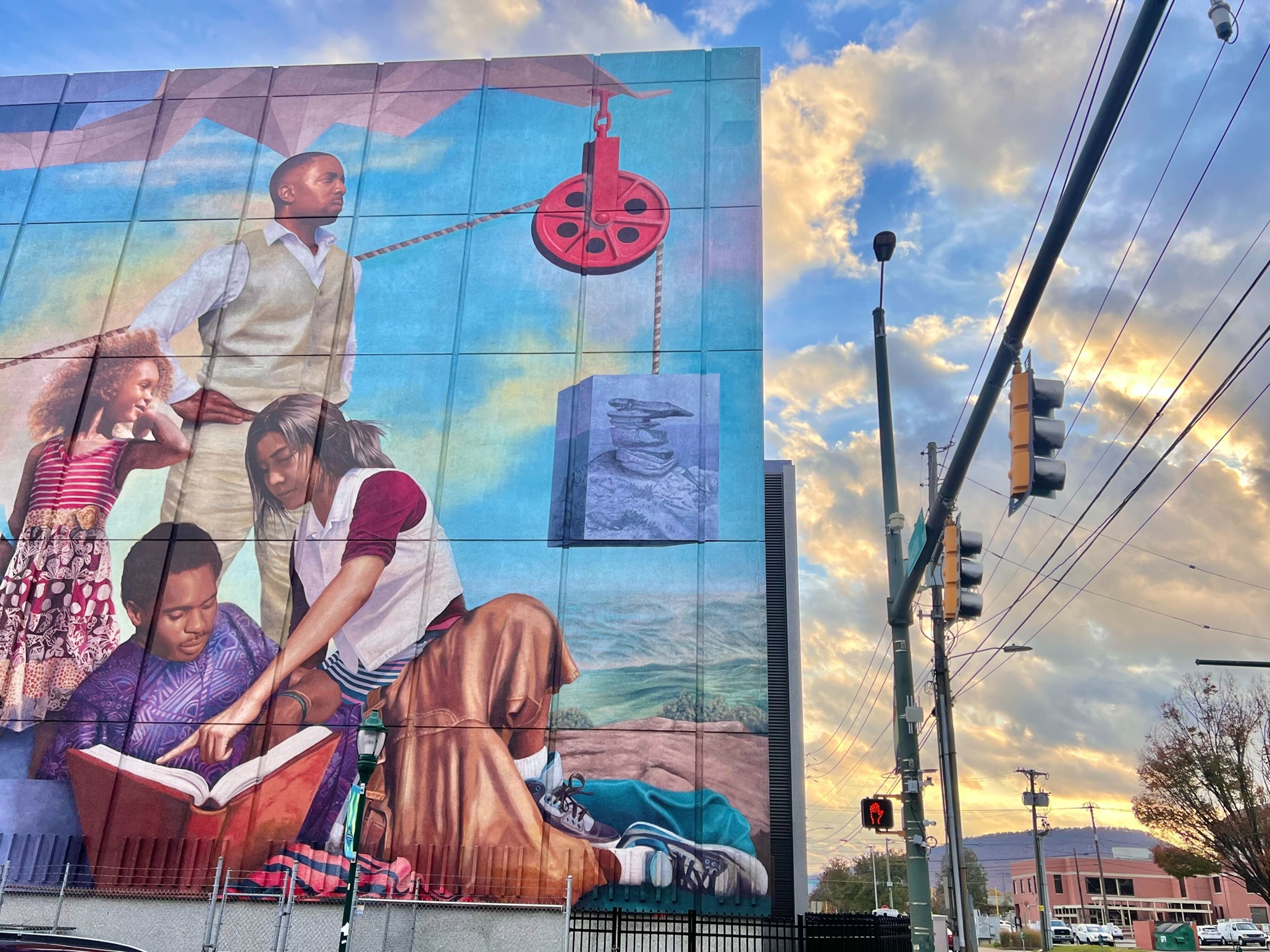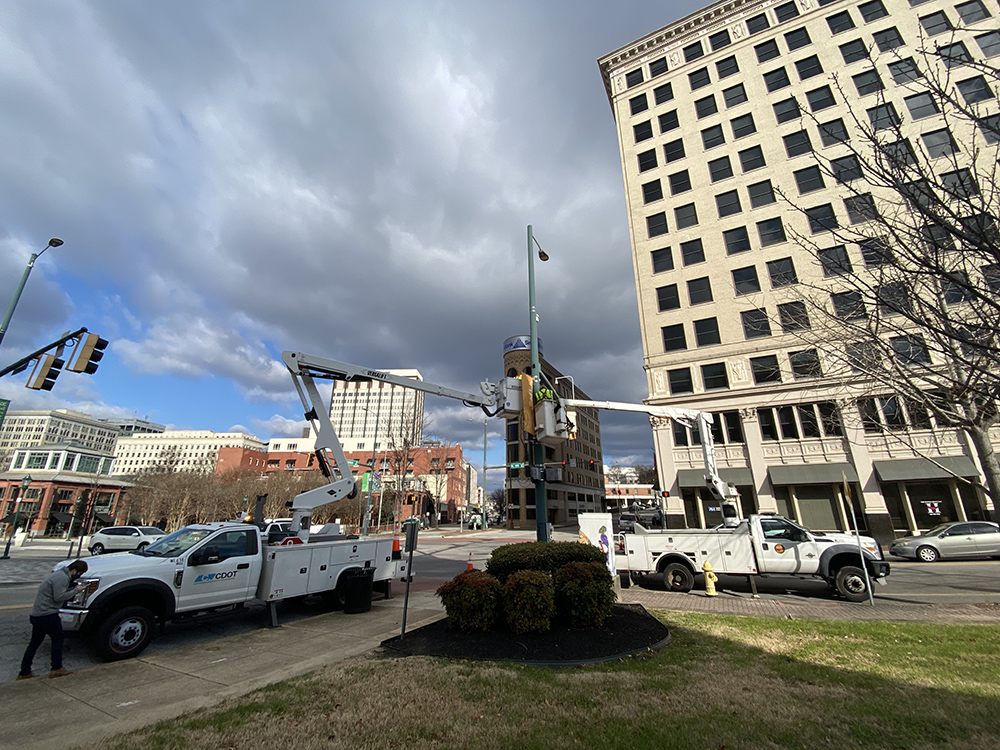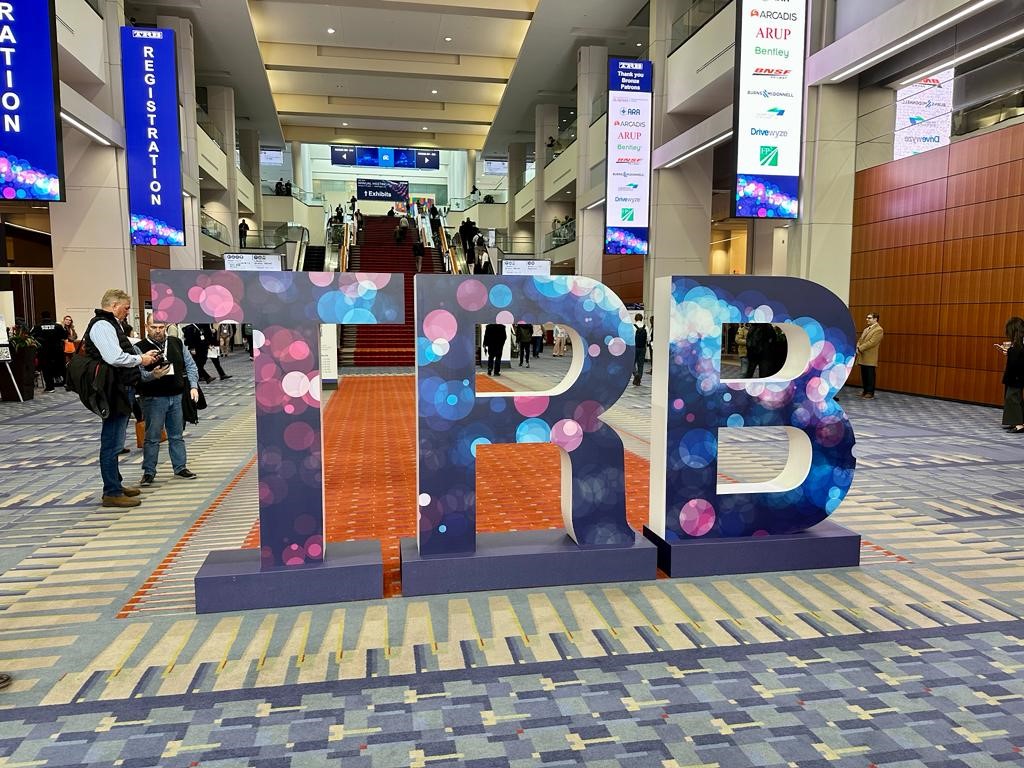
The city of Chattanooga in Tennessee, US, has been experimenting with the use of 3D digital Lidar at intersections and roadways. Lidar specialist Ouster has been one of the partners in the smart traffic work of the University of Tennessee at Chattanooga (UTC) Center for Urban Informatics and Progress (CUIP). An ITS America webinar recently offered some insight into how this urban testbed has created a number of learnings around smarter traffic management, including pedestrian safety.
Lidar can be instrumental in multimodal traffic actuation based on all road users, including people and vehicles; integration with Vehicle to Everything (V2X) systems; and cloud data covering traffic and safety analytics, such as red-light running, near-misses and wrong-way driving.
Lidar is a sensor using optical lasers in order to map - in real time - the space around it. Ouster says its Lidar has 128 laser beams that are effectively transmitted all around the sensor, hitting objects like walls, cars, pedestrians and cyclists; those reflections come back to the sensor, which allows the sensor to create a set of pixels – a point cloud - for every reflection in space.
“We're generating over five million points in every second with our Lidar sensors, so we’re not just inferring how the world around us looks - we're measuring everything at centimetre-level accuracy,” explains Itai Dadon, VP for smart infrastructure at Ouster. “And because we're using lasers, we're effectively immune from lighting and weather conditions and can provide visibility into what is happening on our roads, 24/7, 365 [days a year], without depending on lighting the environment correctly or making sure that the weather is good.”
Ouster’s BlueCity is an end-to-end solution where raw data from Lidars is injected into an edge computer whose perception software translates what the Lidar sees into a set of objects that are classified and tracked in real time and space. “So we detect where are the vehicles, where the trucks, where the pedestrians, where the cyclists - and all that in real time,” says Dadon. “And that information can be used in a variety of ways, both at the edge - for real-time applications such as traffic actuation by the traffic controller or V2X communications - or providing that information to the cloud for further analytics.”

Mina Sartipi, professor and director of the CUIP, explains the centre was set up to partner with local government, working on real-world issues. And the first of these was: “How can we make our environment, our city, safer and more accessible for all?”
Much of CUIP’s work is done by undergraduate and graduate students, and brings together other universities, as well as private companies and government, to develop ideas that can be moved towards large-scale deployment. “We want to go beyond pilot studies,” Sartipi insists. “Our goal is having a city-scale environment for testing ideas and solutions that go beyond being in labs and academic [settings] to really be deployed and adopted by both local government and also people. How can we enhance the quality of life? Can this also be an economic development opportunity for us?”
CUIP research areas cover safety and energy efficiency – which includes traffic signal optimisation – as well as use of communications technology such as V2X, plus sustainability, electrification and automation. The research organisation is deliberately aligned with Tennessee state and Chattanooga city goals, for example around Vision Zero, improving travel times and reducing fuel use and emissions.
Research sandbox
When CUIP was first established, the city created a smart corridor test bed, a mile and a quarter long through downtown Chattanooga, in a mix of residential and business areas, with 12 signalised intersections, all-fibre connectivity, cameras, roadside units, Internet of Things (IoT) gateways and edge computers.
“It was really a sandbox to support the research that we were doing at CUIP,” says Austin Harris, deputy director and CTO of the research institute. “We would run video analytics 24/7, pull in signal phasing and timing data - we still do that today – and we built up a real-time, low-latency data infrastructure to bring all that data back in. We call it Testbed as a Service: it's accessible, a web platform that users can log into, download data and we also have a software development kit. With the current deployment we bring in about two billion data points a day.”
This is vital, since one of the issues which the city of Chattanooga originally had was lack of data. “You can't solve any issues if you don't have any real-world data to work on,” says Harris. “Of course, we're very focused on artificial intelligence and machine learning, so we also need datasets to drive our research. Having a real-world testing and validation environment was one of the core goals, to address urban challenges through data-driven research, and we think it's critical to collaborate with industry and government to test, analyse and validate new technologies.”
Comparing CUIP’s research projects before and after the use of Lidar is illuminating – literally. Cameras have their limitations, explains Harris. One of the first projects on the test bed was funded by the city of Chattanooga, looking at how vulnerable road users were using roadways, and examining near-misses. “It's very easy to obstruct the camera's view, even with multiple cameras, especially if we're looking at pedestrian safety,” he adds. Also, environmental factors, such as fog, rain, snow, and time of day all “had a significant impact on the performance of the algorithm that we developed”.

A conversation with Ouster at an ITS America meeting in 2019 led to Ouster donating Lidars to CUIP to expand on the camera-based, near-miss detection project to improve results. “We saw how Lidar could be used: it gave us much higher resolution information around the geospatial aspect,” explains Harris. “You don't have to calculate that third dimension - you're actually measuring it utilising Lidar, which gives us much more confidence in the data that we're using to build applications on top of.”
Lidars were installed at intersections, diagonally across from one another. “Depending on the size of the intersection, you can utilise one sensor, and then down in the traffic cabinet we have the Ouster BlueCity edge processor as well,” Harris says. “What we find is much higher reliability in varied lighting conditions; we don't see much degradation at all in Lidar. Additionally, the range is extended because these are 360-degree sensors, so we get to see quite a bit further down the approaches than we normally would with the cameras.”
Since 2019, 33 out of the 37 pedestrian fatalities in Chattanooga have occurred at night, Harris says, which makes Lidar an important tool in road safety. From a privacy perspective, it helps that no personally identifiable data is collected using Lidar. Also, the level of data – in terms of speed, object type, relative location of road users toward each other, and so on – creates a solid foundation on which more complex applications (e.g. cooperative infrastructure) can be built.
‘Largest deployment in the US’
Currently, Chattanooga has 13 intersections equipped with Ouster’s BlueCity intersection solutions. But the city is expanding the initial test bed to around 130 intersections in total, covering the downtown area and beyond, comprising edge computing, cameras, Lidars and roadside units. “It will be the largest deployment in the US of Lidar-based traffic detection and actuation software,” Harris says.
CUIP uses the OS 1-128 model, with two Power over Ethernet Lidars per intersection. There is also a mobile data collection unit on a trailer which can be deployed anywhere. “Everything's processed there at the edge,” says Harris. “So there's no large data being pushed over: it can be done over a cellular connection or cellular modem at each intersection.”
BlueCity will soon be used for all the actuation throughout the downtown area of Chattanooga. Current applications are near-miss detection, wrong-way detection, and improved understanding of pedestrian movement. Harris highlights BlueCity’s range, speed estimations, geospatial features and advanced traffic signal performance measures provided to the cloud application that comes with the package.

The software aggregates the point clouds from the two Lidars installed in diagonally opposite corners of the intersection, providing full coverage of all the approaches and the intersection itself. “The reason we're using two Lidars is to not only have better coverage, but also to have visibility into the intersections from two angles, since the Lidars require a line of sight for the lasers to hit the objects - for the sensors to ‘see’ the object,” points out Dadon. “If there is, for example, a large truck turning in the intersection, it would potentially block the view from one Lidar. But by having two Lidars that have 360 degrees field of view, we're able to see the complete intersection with better coverage, but also without any interruption or obstructions in that intersection at any time.”
The software takes the information from the 3D view and translates it into objects with bounding boxes classified as either vehicles or pedestrians or cyclists. These are then tracked over their journey as long as they're within the coverage of one of the two sensors.
The Lidars are connected using Ethernet cables, so just require a Cat6 run from the traffic controller to each pole where the Lidars are installed. “With the PoE injectors, installation really takes just a few minutes by strapping the mounting brackets on the pole itself,” Dadon explains. “Afterwards, all the configuration setting can be done from distance, and the installers don't need to spend any time on the intersection itself, which is extremely important.” Because installations can be done on the poles directly and not on the masts, there is also no need to stop traffic.
Data from the Lidars on where all the cars, pedestrians and cyclists are at each moment in time can be provided at the edge in the traffic cabinet to the traffic controller, to begin actuating the traffic. Visibility on all road users – rather than just vehicles – is a step up from loops, and this information can also be used by roadside units for V2X applications, says Dadon. The information is also pushed to the cloud, with a 4G LTE cell or modem connection adequate for the task.
The BlueCity dashboard shows various types of information from the intersection – for example, counts for each approach, separated by vehicles and vulnerable road users, over a given period (e.g. 48 hours, or one week). Speed counts give users the speed aggregations per approach, with mean, maximum and median measurements using data from the Lidars.
Watch out: students crossing
The University of Tennessee at Chattanooga (UTC) identified students crossing a particular road in large numbers as a major safety issue. “The problem is they didn't really have any way to collect the data to justify any interventions,” explains Austin Harris of UTC’s Center for Urban Informatics and Progress. “There were some cameras on campus buildings that we tried to utilise, but the frame of reference was just not sufficient.”
Instead CUIP deployed its mobile data collection trailer, which comprises four solar panels, solar battery, cellular modem and Ouster’s BlueCity edge processor.

Near-misses can be analysed via an algorithm Ouster calls ‘post-encroachment time’. “If two objects are crossing the same point in space within less, in this case, than two seconds, it will register automatically as a ‘near-miss event’,” Itai Dadon from Ouster explains. “And this information is really hard to collect because you need to understand positions in space and scale in order to do this accurately. And the ability to provide that information to a city, to a DoT, really allows them to take actions to improve and enhance safety in that particular location.”
If a number of these events occur multiple times a day or across a particular period of time, it may be worth putting in a simple solution such as a sign warning drivers to look for cyclists behind them.
In the Chattanooga example, during a four-day study while UTC classes were in session, there were 518 mid-block crossings: 207 of those were near-miss instances with a five-second post-encroachment time, and 33 were near-misses with a two-second post encroachment time.
CUIP took this very concerning information to the university, who took it to the city. A temporary mid-block crossing was put into this location, which is now permanent. In another four-day survey, there were 487 mid-block crossings, with 33 out of crosswalk. But the key result was zero near-misses following the installation of the crossing.
“We can see there's a huge improvement here by doing this,” Harris says. “And this is such a great project, because it shows the full circle.”
“Sometimes the solutions are not necessarily high tech, but the ability to understand where and when they are needed really depends on having the data,” concludes Dadon.












